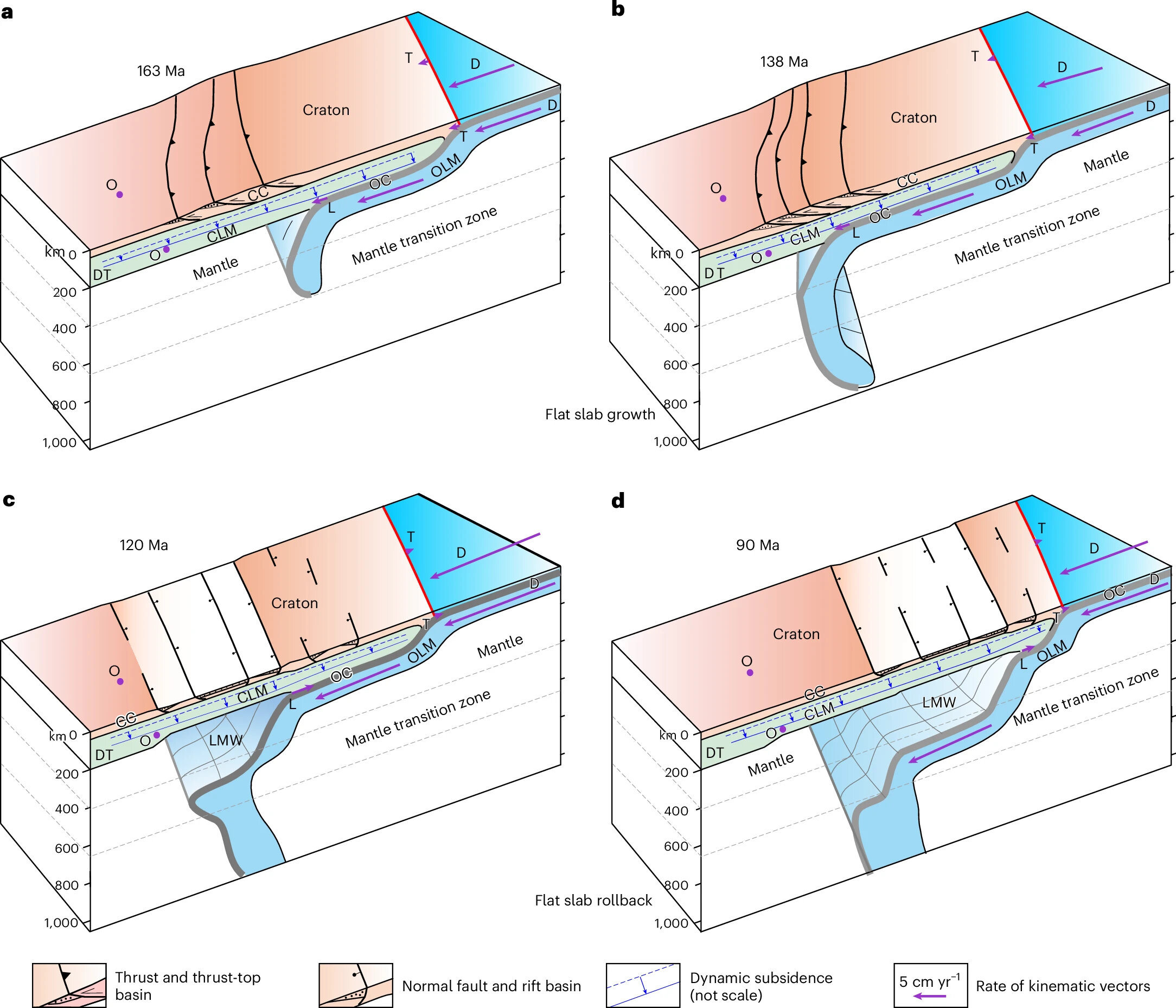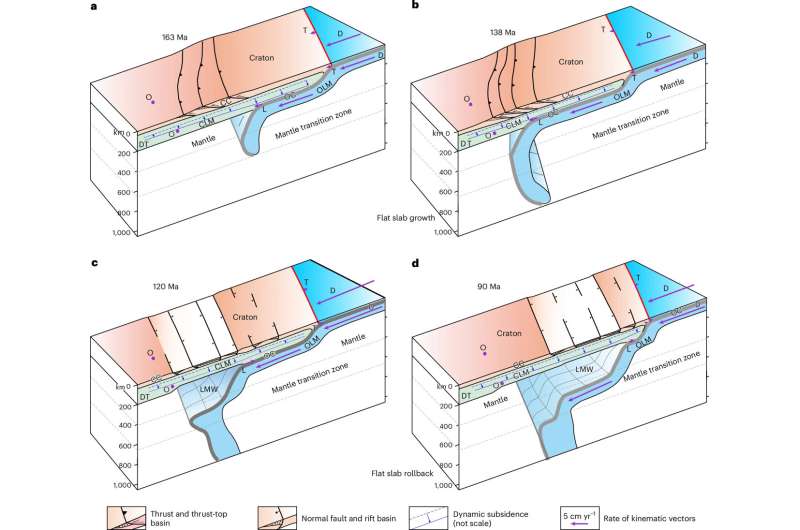

Earth’s continental configurations have changed dramatically over its billions of years’ history, transforming not only their positions across the planet, but also their topography as expansion and contraction of the crust made a mark on the landscape. Some areas of continental crust have maintained long-term stability from the beginning of Earth’s history, with little destruction by tectonic events or mantle convection, known as cratons.
Recent research, published in Nature Geoscience, has considered the mechanisms by which these cratons may have deformed, a process termed decratonization.
While subduction (when a denser tectonic plate is forced beneath the other into the underlying mantle where it melts) and deep mantle plumes (when a segment of the mantle rises to the surface due to its buoyancy and thermally erodes the crust) have been proposed as possible causes, the mechanisms driving the deformation and eventual destruction of Earth’s cratons remain elusive.
Professor Shaofeng Liu, of China University of Geosciences, and colleagues have investigated the disintegration of one particular craton over a period of 200 million years.
To do so, the research team considered the North China Craton (NCC), western Pacific Ocean, since the middle Mesozoic (168 million years ago, Ma) using four-dimensional mantle flow models of Earth’s plate-mantle system. This included data on the evolution of surface topography, deformation of the lithosphere (crust and uppermost mantle) and seismic tomography (a technique that uses seismic waves to generate 3D models of Earth’s interior).
They identified two stages of major change for the NCC that have led to its deformation through time. Initially, subduction of the shallowly-dipping oceanic Izanagi plate (flat-slab subduction) from the east led to thickening of the overriding NCC crust of the Eurasian plate as it was shortened due to compression of the land and formed topographic highs (i.e., mountain ranges, the furthest extent presenting itself as the Taihang Mountains on the surface). This occurred due to eastwards movement of the Eurasian plate at pace.
A subsequent phase of rapid flat-slab rollback (when the subducting plate retreats back to the surface) led to lithospheric extension and thinning by 26% compared to its initial thickness. This resulted from the movement of the NCC changing from eastwards to southwards, slowing the convergence of the two plates.
These two stages occurred over millions of years in multiple phases, beginning with north-east trending thrust (older rocks pushed above younger rocks) and transpressional (horizontal displacement of rocks with an added shortening perpendicular to the movement) faults during the Jurassic and early Cretaceous (from the beginning of the study period at ~200 Ma through to 136 Ma).
From 136 Ma there were several episodes of crustal extension, before this was interrupted by compression through 93–80 Ma in the late Cretaceous, with subsequent continued extension through to the present day, ultimately leading to disintegration of the craton.
To validate these findings, the scientists generated three flow models to reconstruct the tectonic history of the region, based upon predictions of their structures in the modern day and comparison to seismic tomography data.
The validated flat-slab rollback model accurately reproduced a 4,000-km wide and up to 660 km deep slab within the mantle transition zone, which ultimately went on to form a large mantle wedge.
This feature is evidenced in the volcanic rock record observed today, with carbonates recycled from the subducted slab into the upper mantle forming characteristic carbonated peridotite. Over tens of millions of years, this mantle wedge eventually disappeared as slab rollback progressed.
Decratonization of the NCC is not an isolated event, with Professor Liu suggesting other areas of the planet may have experienced similar processes, with local differences, and is the focus of continued research.
“The North American craton, South American craton and the Yangtze craton in China may have experienced similar deformation. All of these may have experienced early flat-slab subduction. However, intense subsequent rollback subduction might have occurred in the Yangtze craton. In contrast, the North American craton underwent trench retreat following flat-slab subduction but did not exhibit significant slab rollback.”
Overall, this research highlights how cratons in continental interiors are less likely to be destabilized compared to those close to plate boundaries, which may be susceptible to subduction and rollback processes over time.
“Ancient lithosphere can be broken apart, and this disintegration can be caused by this special form of subduction occurring near oceanic plates, revealing how the continents evolved over Earth’s history,” Professor Liu concludes.
More information:
Shaofeng Liu et al, Craton deformation from flat-slab subduction and rollback, Nature Geoscience (2024). DOI: 10.1038/s41561-024-01513-2
© 2024 Science X Network
Citation:
Research suggests Earth’s oldest continental crust is disintegrating (2024, October 8)
retrieved 8 October 2024
from https://phys.org/news/2024-10-earth-oldest-continental-crust-disintegrating.html
This document is subject to copyright. Apart from any fair dealing for the purpose of private study or research, no
part may be reproduced without the written permission. The content is provided for information purposes only.